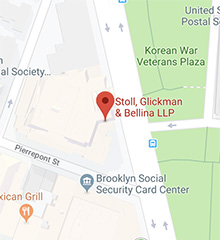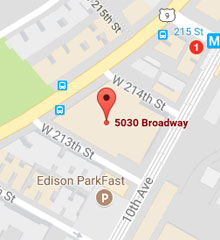Welcome to the inaugural post in our new Employment and Workplace Justice Practice Blog. If you are here, you are likely searching for wisdom on how to handle discrimination or other unlawful conduct in the workplace. You’ve come to the right place! Let’s start with the sacred source text for civil rights knowledge – the civil rights movement and the birth of Title VII.
The history books will tell you that the civil rights movement started in December 1955 with a sudden flash of protest – the Montgomery bus boycott- but it didn’t. The story is far more complicated and interesting, and it starts on a tobacco farm in Simsbury, Connecticut in 1944. During a summer break from his first year at Morehouse College, Martin Luther King accepted a work-study job on a tobacco farm in Simsbury. It was during this summer that King first experienced northern society and equal treatment under the law. He worked and attended church side by side with white citizens, an experience that was completely alien to him having spent his entire early life in the segregated south. At the end of the summer, he returned to college committed to pursuing racial equality. It was Simsbury where the idea of change first took shape.
Many of the major figures in the civil rights movement had similar moments well before the bus boycott. Rosa Parks, for instance, first became politically active after being refused entry on a public bus in 1943, a decade before her historic arrest which lead to the boycott. That’s not to discredit the place of the Montgomery bus boycott in the history of the civil rights movement. It still stands out as the first public act of conscience in the movement, but it was hardly the first moment of private reflection. Those moments occurred quietly as southern blacks experienced segregation in trains, at work, and in places of public accommodation and their tolerance wore increasingly thin.
However, in the case of King at least, it was over 10 years before he was able to take direct action, and only after spending a decade studying the practice of nonviolent resistance, understanding how to mobilize a constituency, and learning how to effectively promote a message to the public. And when the time came for action following Rosa Parks’ arrest, a coalition of civil rights organizations, union leaders, lawyers and ordinary citizens moved cautiously and judiciously from thought to action, carefully adopting rules for the burgeoning movement and meticulously planning each public event. From there, a boycott that was planned to last just one day ended up lasting a year, and only after significant debate over whether to continue after the first successful day. Who knows what would have come of the civil rights movement if the boycott had not been extended indefinitely. The result was the passage of civil rights legislation, including Title VII of the Civil Rights Act of 1964, a law which guarantees a workplace free from discrimination.
As an attorney who practices employment law and enforces anti-discrimination statutes, I do so only because of the success of a movement of ordinary people who, over the course of a decade, gradually moved from thoughts of resistance to direct action. Without the efforts of these early leaders, and their disciplined and selfless resistance, a fragile yet vital movement would never have gotten off the ground. Everything moved incrementally, but each decision was made thoughtfully, because leaders knew that everything they decided would have a massive impact on future events. And it was in this manner that the idea of civil rights grew slowly from an idea in a boy’s head, to a one-day boycott, to a one-year protest, and then to a movement that changed the world.
Sadly, the prevailing narrative of the civil rights movement emphasizes the more romantic – and untrue – version of events. This narrative was encouraged by the passage of Title VII which was taken by the public at large as the end of an era. I see the consequences of society’s acceptance of this false narrative play out in the stories of the people who seek my counsel. When they tell me about their credible experience of workplace discrimination, they are almost surprised when I tell them, “You have a case – I suspect this is happening because you are a woman. These days, a fair and just workplace is taken for granted. Unprepared for this news, those who encounter discrimination usually hang their heads in fear and frustration when informed.
We’ve done ourselves a great disservice by separating ourselves from the hidden narrative of discipline, awareness and organized action that is the practice of civil rights. Civil rights were won with the understanding that they would need to be exercised in order to be enjoyed. Powerful interests still work in favor of discrimination in the workplace, albeit less overtly. As a result, your right to a workplace free from discrimination will likely not be recognized by your employer when you believe it to be in jeopardy. Luckily, because the practice of civil rights has not changed, should you chose to engage it, you too will join the same tradition of awareness, discipline and direct action – the same living tradition practicing civil rights movement that was first observed by the leaders of the civil rights movement in the 1950’s. There is a well-traveled path for you to follow, and plenty of support to be had along the way. You are part of the same story of struggle encountered by generations of workers, citizens, clergymen, mothers and fathers – ordinary people. There is nothing separating you from them except a common misunderstanding of our past.
If you are suffering from discrimination and feel lost and paralyzed, you are not alone. You are acting in the greatest tradition of our country by merely reflecting on action, which is the necessary first step, and confirms your place in the living tradition of civil rights practice. I think of our Firm’s Employment & Workplace Justice Practice, and this blog, as a part of the same living tradition which reaches back to Simsbury in 1944. If you are suffering from discrimination in the workplace, and if you are contemplating the move from thought to action, you are now part of the narrative. This blog is dedicated to you in the hopes that you find your voice. Please use it as a resource freely, and thank you for visiting.



The United Nations has a mandatory rmnereeitt age of 62, which can be be considered age discrimination, since is solely based on the age of the person, and not on his or her capabilities or performance.The UN mandatory rmnereeitt age also means that no person above 62 years of age would be hired. This policy is not consistent with the behavioral change that is mandated in its member states, and it affects women disproportionally. Such disparate impact was recognized by former UN Secretary General Kofi Annan, who stated in March 1999, during the International Year of Older Persons, “Women comprise the majority of older persons in all but a few countries. They are more likely than men to be poor in old age, and more likely to face discrimination.”